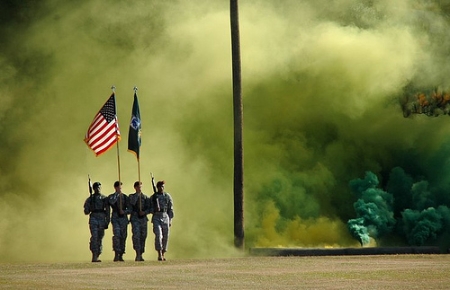The U.S. Army wants you, private investors, to install large-scale renewable energy projects on its lands to meet a goal of drawing 25% of electricity from clean sources by 2025.
“(It’s) the right thing to do for the environment – certainly in this age of diminishing resources the right thing to do for the federal taxpayers and, most importantly, the right thing to do for our soldiers,” Secretary of the Army John McHugh said during a media call at the GovEnergy conference.
On Wednesday, McHugh announced that the Army will open an Energy Initiatives Office (EIO) Task Force on Sept. 15 to serve as a “one-stop shop” for the private sector to find opportunities for partnerships in a variety of renewable energy projects. Unsolicited proposals are welcome.

The Army estimates it will need $7.1 billion in private investment to generate 2.1 million megawatt-hours of clean power annually. The EIO approach will help the Army aggressively add multiple megawatts of clean energy by 2025 while saving tax dollars.
Katherine Hammack, assistant secretary of the Army for Installations, Energy and Environment, said the Army is looking for average power plants to be 10 MW or greater. The U.S. Department of Defense recently granted the Deputy Under Secretary of Defense for Installations and Environment authority to approve long-term contracts of up to 30 years for power purchase agreements (PPAs). The 30-year PPA had been limited to geothermal energy.
“We’re not saying all projects will need 30-year authority, but it’s something we’re going to be working on [on] a project-by-project basis,” Hammack said.
McHugh said the approach could be attractive to investors because the Army will be “a guaranteed customer,” while there are also opportunities to sell surplus energy back to the grid.
“In short, we have the ‘land and the demand’ and we think that’s a good catchphrase,” added Jonathan Powers, director of outreach for the Energy Initiatives Office.
The Air Force used long-term PPAs to spur development of a 15-MW solar array at Luke AFB in Arizona and a 14-MW solar plant at Nellis AFB near Las Vegas. The Army built upon that business model for a 500-MW solar plant at Ft. Irwin base in California.
Powers said the Army has completed 126 renewable projects, while another “20 are in the hopper.” Lessons learned from those projects, he said, will help the EIO provide future investors with development assistance on legal, technical and policy issues.
The office will be working closely with Fort Bliss, which released a request for information this week seeking industry input to help the El Paso, Texas, base become the first large-scale “net zero” military installation.
The EIO is part of a greater effort by the military to use renewables to enhance energy security inside the continental United States and reduce dependence on fossil fuels. Last spring, the DoD said its Operational Energy Strategy would pursue alternative fuels and electricity generation to help secure warfighters overseas.
NPR reported that the military spends about $20 billion on fuel for air conditioning in Iraq and Afghanistan. Fuel delivery trucks have been a regular target of enemy combatants, so the military is exploring use of renewable energy to enhance security of troops.
 Follow
Follow